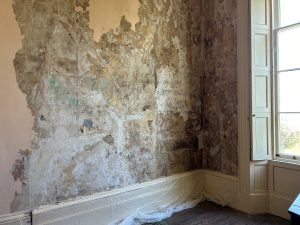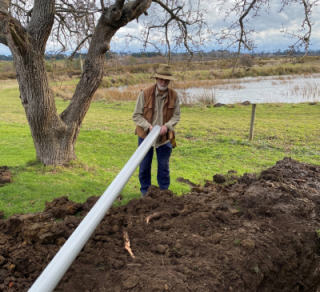Work at Clarendon has addressed problems of rising, falling and penetrating damp. This has included replacing rainwater goods, tracing drainage lines, replacing the moat pump, and subtracting plastic sheeting underlying the basement paving that forced moisture into the walls of the house.
With this completed, we have commissioned Michael Power of Heritage Solid Plastering, Hobart, to replace sections of damaged plaster ceilings in the hall and two upper floor rooms. Michael has also removed sections of the Trust’s 1960s wall lining papers to allow the walls to dry out. This has revealed evidence of the Cox family’s original decorative treatments including remnants of a pink distemper, probably applied to the drawing room walls as a temporary finish while the fresh plaster dried and ‘cured’. The drawing room was probably wallpapered throughout the 19th century.

Removal of the lining paper in a room that we believe to have been James Cox’s estate office, has revealed evidence of fitted shelves. These may have been for his extensive library which was recorded in detail in the Clarendon 1869 sale inventory.




